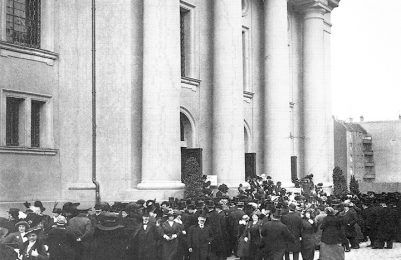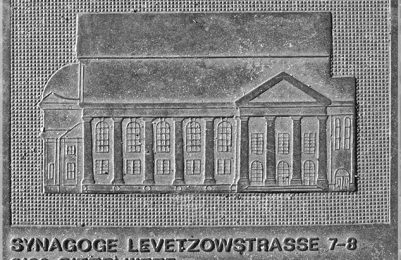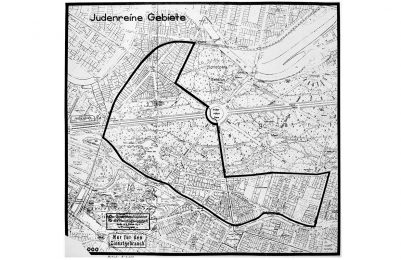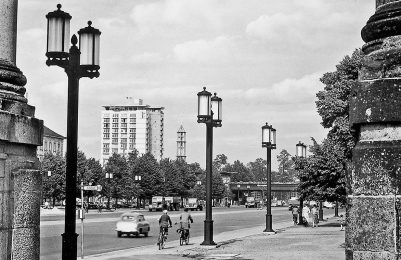The Hansaviertel in the National Socialist Period
The National Socialist dictatorship brought to far-reaching changes in the Hansaviertel. Like everywhere in the German Reich, the Jewish population was subjected to increasingly repressive measures. During the Reichspogromnacht on 9 November 1938, synagogues which were also frequented by the Jewish inhabitants of the Hansaviertel, were set on fire and destroyed. Today at Levetzowstrasse 7–8, a memorial commemorates the former synagogues and at Lessingstrasse 6 there is a commemorative plaque.
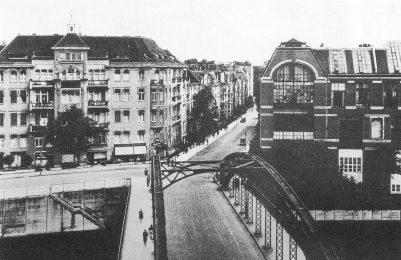
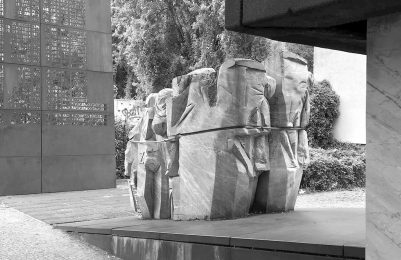
Plans for Berlin to be converted into a prestigious seat of government and into the imperial capital “Germania” also had an impact on the residents of the Hansaviertel. The redesign of Berlin was personally supported by Hitler and was under the direction of Albert Speer, who was appointed General Building Inspector for the imperial capital by Hitler himself. The plan provided for megalomaniacal, magnificent edifices, such as the “Great Hall” at the Brandenburg Gate and grand boulevards intersecting the old city structure in the form of a giant axis cross, which mostly went through narrow residential areas. Because of this, Speer planned their demolition. Even though the Hansaviertel itself was not affected by these plans, it was one of the quarters in which the displaced “demolition tenants” of Aryan descent were to be given replacement apartments. In order to create space for this, Speer initiated the “de-Jewification” of residential areas from 1941. Jewish residents were “evacuated” – which initially meant resettled – on the basis of the Reich Citizens Act and a large number of subsequent ordinances. (1) The Jewish residents who were “cleared out” were mostly sent to so-called Jewish houses, where people lived together in a confined space before being deported to concentration camps where they were murdered. (2) All these measures led to the virtual extinction of Jewish life in the Hansaviertel. Close to the Hansaviertel on the former Charlottenburger Chaussee, today’s Straße des 17. Juni, the street lamps designed by Albert Speer also remind us of the time of these megalomaniacal reconstruction plans, which were finally abandoned when the war took a different course.
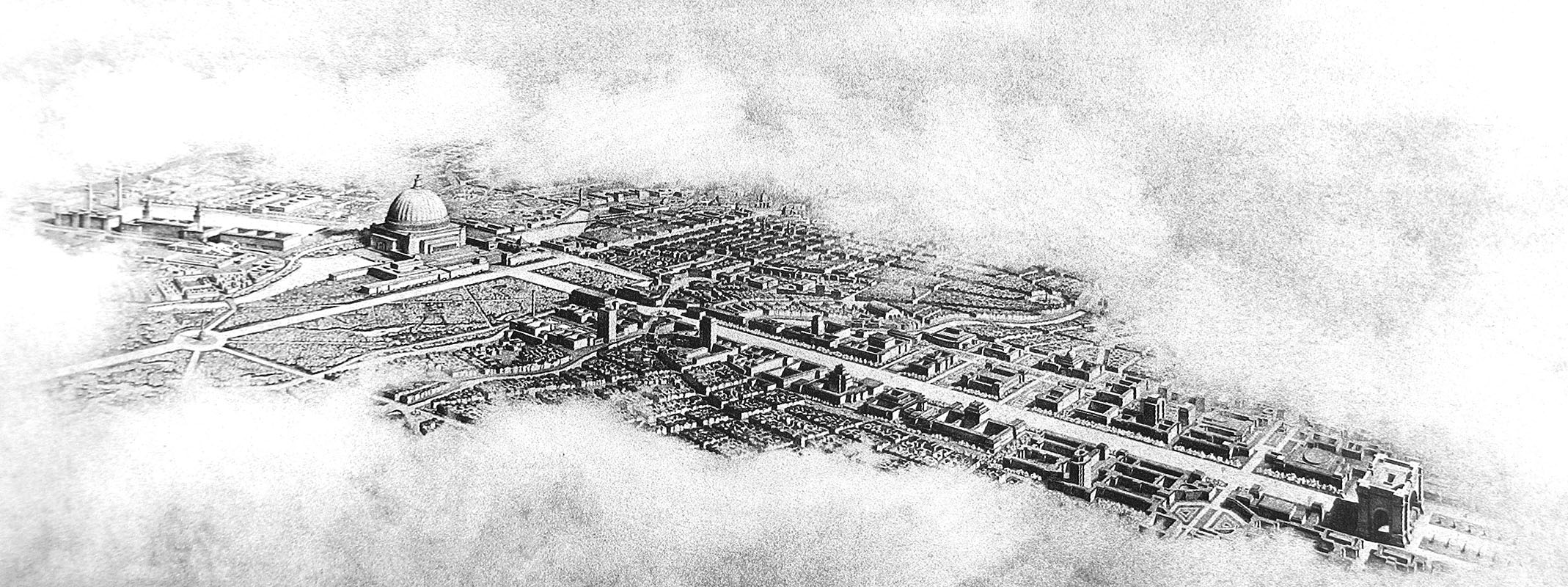
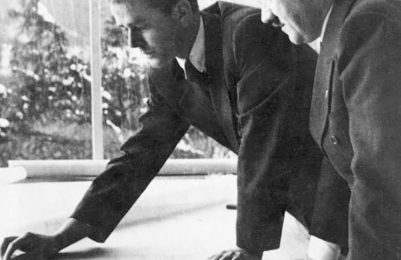
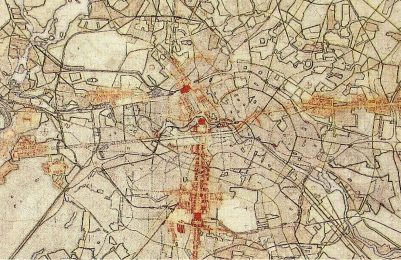
Dr. Sandra Wagner-Conzelmann
